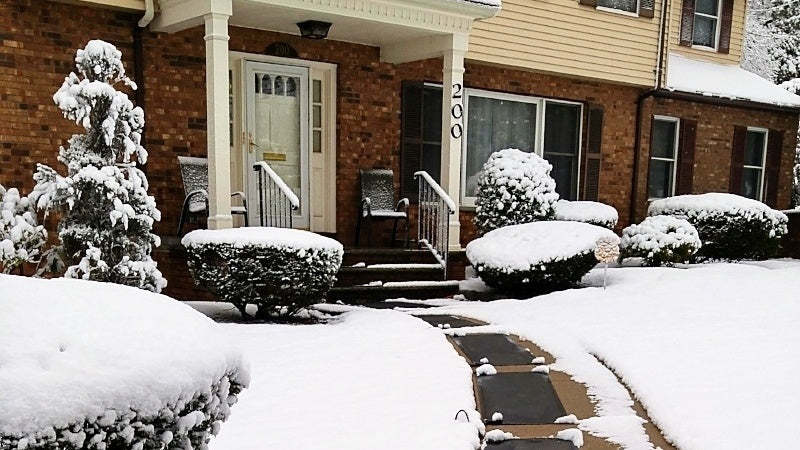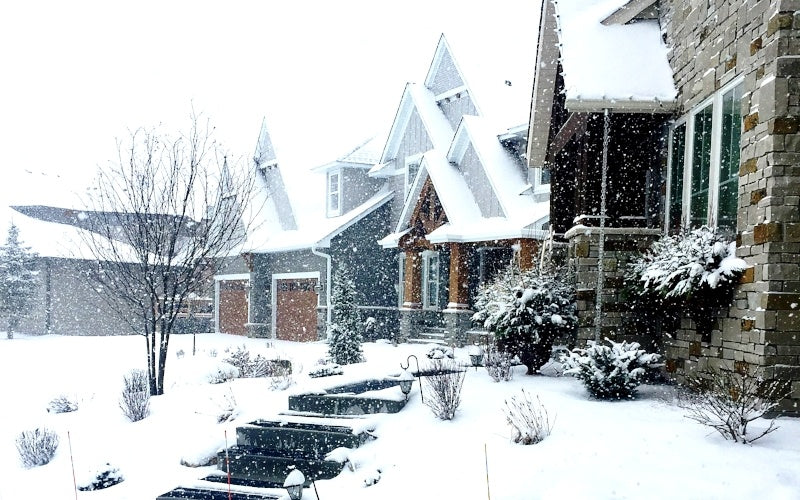
Every winter, homeowner's in the northern half or so of the United States and all around Canada face the dilemma of how to rid their driveways of snow/ice build-up without doing any damage in the process. Rock salt and other deicers are typically used to melt down snow and ice, while shoveling may still be needed to remove loosened but slow-melting "tough spots." Yet, both concrete and asphalt drives can suffer harm from the use of deicing salts.
Salt Damage to Concrete Driveways
Concrete is a highly durable driveway material that withstands the pressure of even extremely weighty vehicles rolling over it. However, something as seemingly weak as salt can do significant damage to concrete.
When salt crystals make their way into the concrete through its surface pores, they then attract water, increasing the water-saturation of the concrete by as much as 10%. Additionally, if run-off from ice and snow melted by deicing salts is not quickly shed off of your driveway, it will puddle and seep inside the concrete, exacerbating water-saturation yet further. Once temperatures drop below the freezing point, the water inside your concrete will expand and cause small cracks/fissures and surface spalling. A winter with numerous freeze-thaw cycles can do serious damage to a driveway with excess water content.
If you have just had concrete poured before winter, it is especially critical that it was installed correctly. You should have at least 30 days for the new pavement to thoroughly dry out before winter sets in. Concrete with additional water added to it or to its surface during construction will be especially susceptible to salt damage during winter, so make sure your contractor takes this into account if your driveway is being poured in the fall.
Salt Damage to Asphalt Driveways
Some will tell you that "asphalt is not affected by salt." And while it is true that salt can lower the pH level of concrete in a way that weakens it but not of asphalt, asphalt can also be indirectly damaged by salt and deicers. Additionally, deicers containing acetate and/or formate are prone to damage asphalt driveways.
Just consider how potholes and surface damage occurs on the public highways, and you will understand that the same process can deteriorate your asphalt driveway. Rock salt and other salt-containing deicers will melt snow and ice and, as with concrete, encourage water to seep in through surface pores. The freeze-thaw cycle takes over from there, and as asphalt is rather brittle in the winter time, the damage can be quite significant.
Non-Salt Driveway Deicing Solutions
Aside from just letting the snow accumulate or shoveling/chipping off the ice and snow as best as you can, there are four other solutions to clearing off your driveway in winter that do not involve salt.
-
Sand: It is possible to only use sand on your driveway. This will not melt the snow/ice, but it will provide extra traction. Mixing sand and salt is a compromise solution that is also popular. If conditions are too slippery, however, sand will not be a safe alternative.
-
Concrete coatings: Clear film are available that will coat concrete and prevent water absorption. Many of these coatings containing chemicals like siloxane/silane, which allow concrete to "breathe," but others, often using silicone/paraffin do not, which can trap water inside (soaked up through the underlying soil) and lead to surface spalling.
-
Heated driveways: Installing electric heating coils under an asphalt driveway or hydronic (water-antifreeze circulating) plastic tubing in a poured concrete driveway can effectively melt surface snow/ice. You will have control over temperature settings and can heat only a portion (even just tire lanes) of the driveway if wished. A heated driveway will require an initial investment of at least several thousand dollars but will last for many years to come.
-
Snow-melting mats: While snow melting mats are frequently used on outdoor walkways, stairways, and entry areas, you can also turn your driveway into a heated snow melting powerhouse with heated driveway mats. These mats, consisting of a powerful heating element sandwiched between two layers of rubber, can melt several inches of snow in only an hour or two. They are slip-resistant, do not allow melt-off to refreeze, utilize your normal power outlets, and can be easily taken up and stored for next year.
While salt is the most commonly used deicing method, it is also a method that does major damage to concrete and asphalt driveways each and every year. Finding alternative ways to rid your driveway of ice and snow will minimize your salt use and extend the life of your pavements.


